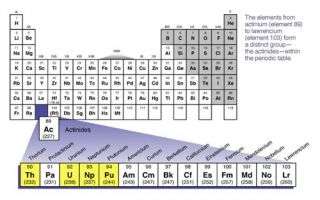A new understanding of crystal structure of actinide metals

Researchers have a better understanding of how the crystal structure of some metals becomes stable through magnetism.
Magnetic stabilization of the crystal structures of metals is rare. In some metals, such as manganese, iron, and cobalt, the magnetic interaction energy is large enough to influence the crystal structure.
However, recent research shows that magnetically stabilized crystal structures also include the heavy actinide element, curium (Cm). In a diamond-anvil cell study, Cm was pressurized up to one million atmospheres of pressure, which caused the metal to undergo transformations between five different crystal phases.
But a new study by Livermore scientists goes one step further. The team, made up researchers from of Lawrence Livermore and Oak Ridge national laboratories and Daresbury Laboratory in the United Kingdom, probed the electronic and magnetic structure of Cm by using electron energy-loss spectroscopy (EELS) in a transmission electron microscope (TEM), electron atomic calculations and density functional theory (DFT). To date absorption-type experiments have not been performed on americium (Am) or Cm.
“Our results for curium go a long way in teaching us a general understanding of how this mechanism occurs,” said Kevin Moore, the LLNL lead author of the research paper that appears in the June 8 issue of the journal Physical Review Letters. Other Livermore researchers include Mark Wall, Adam Schwartz and Per Söderlind as well as Gerrit van der Laan from Daresbury and Richard Haire from Oak Ridge.
The Hund’s rule coupling is the key to producing the large spin polarization that dictates the newly found crystal structure of Cm under pressure.
Hund’s rule of maximum spin multiplicity is a principle of atomic chemistry, which assumes that a greater total spin state usually makes the resulting atom more stable, most commonly exhibited in a lower energy state, because it forces the unpaired electrons to reside in different spatial orbitals. By staying out of each others way, the electrons lower their total energy.
“This gives us great insight into the valence state and electron coupling mechanisms of 5f electrons in plutonium and americium, two metals that are significant to nuclear reactors,” Moore said. “Our data will help us refine our theoretically predictive codes for these metals to give us a better understanding of the physical properties of the metals and how they will behave under extreme conditions.”
The Livermore research also helps fill a gap in a recent Nature paper (446, page 513, 2007) from Rutgers University that had a missing data point in a table. The LLNL americium and curium data fill the blank space in the table.
“The two papers (PRL and Nature) greatly further our understanding of the middle actinide metals – plutonium, americium and curium.”
Source: Lawrence Livermore National Laboratory





















